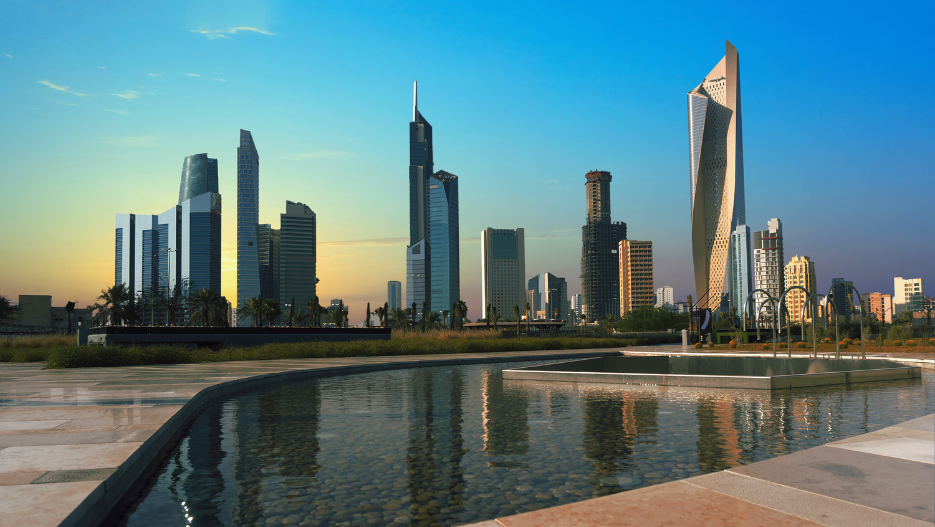Kuwait Real Estate Market Outlook 2026: Trends, Drivers & Key Players

A deep dive into the residential, commercial and mixed-use property sector in Kuwait and the companies leading the surge
As Kuwait accelerates its economic diversification under the “New Kuwait 2035” vision, the country’s real-estate sector is entering a decisive phase of transformation. For investors and developers alike, 2026 presents a moment of opportunity: strong infrastructure spending, regulatory reform, and rising demand for modern residential and commercial assets are reshaping the landscape.
Market Overview & Growth Outlook
The real estate market in Kuwait shows stable momentum heading into 2026. After a period of correction, investment activity is rebounding, supported by solid credit growth and renewed confidence from both domestic and regional investors.
Economic growth is expected to strengthen in the coming years, backed by government spending and improved non-oil activity. Residential and commercial prices are stabilising, while demand for modern developments and integrated communities continues to rise. Land values remain resilient, and rental yields in select districts are improving.
The overall picture is one of cautious optimism — a market that is shifting from recovery to sustainable expansion, fueled by new development models and a broader economic reform agenda.
Key Drivers of Growth
Economic and Regulatory Reform
Kuwait’s ongoing reforms are opening the real-estate sector to greater private-sector participation. Measures to streamline licensing, modernise mortgage frameworks, and allow longer-term leases for expatriates are attracting fresh investment.
Infrastructure Development
Massive investments in new cities, housing projects, and transportation infrastructure are transforming the urban landscape. Projects such as Al Mutla’a City and other mixed-use expansions are driving demand for housing, retail, and hospitality assets.
Demographic Dynamics
Population growth, urbanisation, and the country’s young demographic profile ensure a strong underlying need for housing. A growing expatriate community continues to sustain rental demand in both mid- and upper-tier segments.
Investor Appeal
Rising land values and a maturing financial sector are increasing the attractiveness of real estate as an investment class. Institutional investors and family offices are increasingly allocating capital to real-estate portfolios for stable returns.
Technology and Sustainability
Digital transformation and green-building initiatives are gaining traction. Developers are adopting smart-building technologies, energy-efficient designs, and integrated management systems to meet evolving market expectations.
Major Challenges & Risk Factors
Despite positive fundamentals, the market faces a few structural challenges. Housing affordability remains a concern, especially for young Kuwaitis. Oversupply in certain luxury segments could weigh on prices if not managed carefully.
The economy’s exposure to oil-price fluctuations still influences sentiment and liquidity, though diversification is slowly reducing this dependency. Regulatory complexity and limited transparency in transactions also create barriers for foreign entrants.
High financing costs and global interest-rate trends may challenge developers relying heavily on credit. Managing cost efficiency and delivering projects on time will remain key success factors in 2026.
Segmental Analysis: Residential, Commercial & Mixed-Use
Residential
Demand for housing remains strong, particularly in affordable and mid-income segments. The government’s renewed focus on private-sector partnerships for housing delivery is likely to accelerate supply. Suburban and new-city developments are expected to outperform saturated inner-city areas.
Commercial / Office
The office market is evolving as businesses seek flexible, high-quality spaces. While prime office locations continue to attract demand, older properties face pressure to modernise. Hybrid work models are influencing office-space design and leasing strategies.
Mixed-Use / Retail / Industrial
Integrated developments combining residential, retail, and leisure components are becoming increasingly popular. Industrial and logistics real estate are also emerging as growth areas, driven by e-commerce and distribution needs. The long-term trend points to diversification beyond traditional residential assets toward more balanced, mixed-use urban ecosystems.
Leading Companies Shaping the Market
United Real Estate Company (URC)
Founded in 1973, URC is one of Kuwait’s largest developers with a diversified portfolio spanning residential, commercial, and mixed-use projects. Its strong capital base and regional footprint make it a cornerstone of Kuwait’s real-estate expansion.
Kuwait Real Estate Company (AQARAT)
AQARAT has been a pioneer in Kuwait’s real-estate landscape, known for its innovative approach to mixed-use development and asset management. Its emphasis on quality, transparency, and long-term leasing models positions it strongly for 2026 and beyond.
A’ayan Real Estate Company
Established in 1976, A’ayan has built a reputation across the residential, commercial, and financial segments. The company’s focus on diversified investments and mid-income housing aligns perfectly with the evolving needs of Kuwait’s population.
Alargan International Real Estate Company
Alargan combines residential and hospitality-driven development with regional expansion ambitions. Its growing emphasis on modern design, sustainability, and technology integration reflects the direction of Kuwait’s future urban development.
Together, these firms embody the evolution of Kuwait’s property market — blending tradition with innovation and national development goals with private-sector efficiency.
Implications for Investors and Developers
- Focus on high-growth districts: New urban zones and city projects linked to national infrastructure will continue to offer the best long-term appreciation potential.
- Prioritise affordable and mid-income housing: Meeting real local demand will deliver stability even in fluctuating markets.
- Invest in mixed-use models: Integrated communities combining retail, hospitality, and housing will deliver stronger and more resilient yields.
- Adopt flexible financing structures: As interest-rate volatility persists, diversified funding strategies will be essential.
- Leverage technology and ESG principles: Digitalisation and sustainability will differentiate leading developers and attract institutional capital.
For developers, engaging early in public-private partnerships and aligning with national housing priorities can unlock both scale and credibility.
Outlook for 2026
Kuwait’s real estate market in 2026 stands at a turning point. The combination of solid fundamentals, economic reform, and infrastructure expansion creates a foundation for sustainable growth. Success, however, will depend on the sector’s ability to deliver value through innovation, affordability, and long-term vision.
The companies leading this transformation — URC, AQARAT, A’ayan, and Alargan — demonstrate how strategic planning and adaptability can shape the country’s urban future. For investors and developers ready to engage, Kuwait’s 2026 landscape offers both opportunity and momentum.